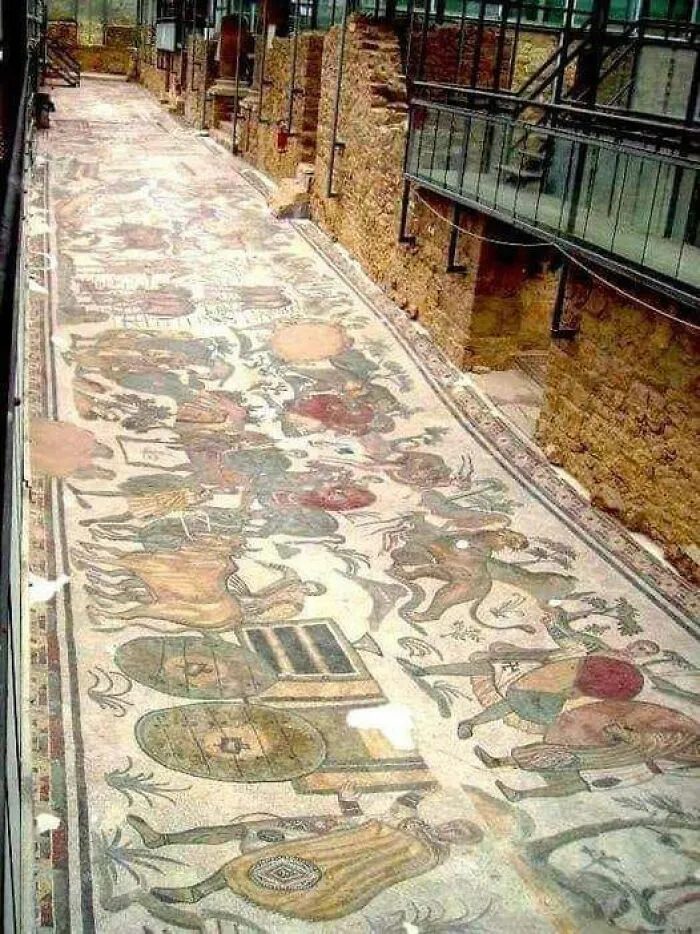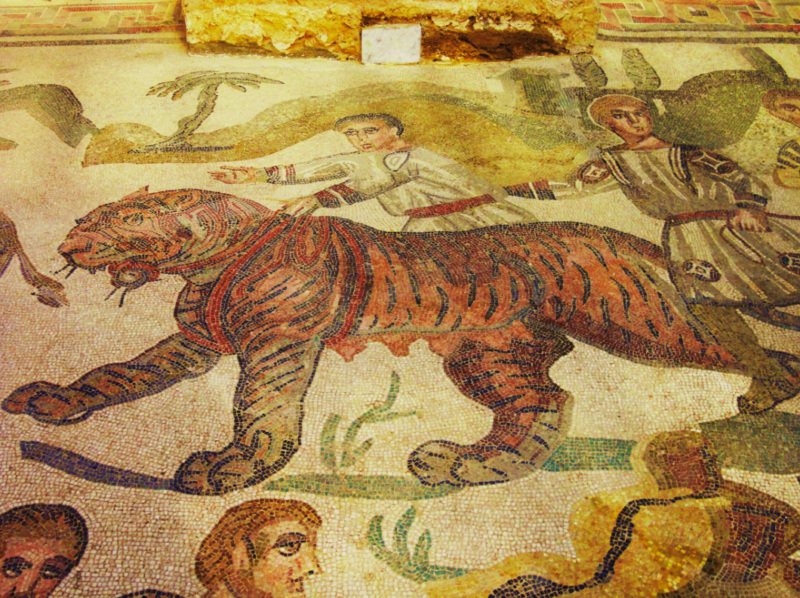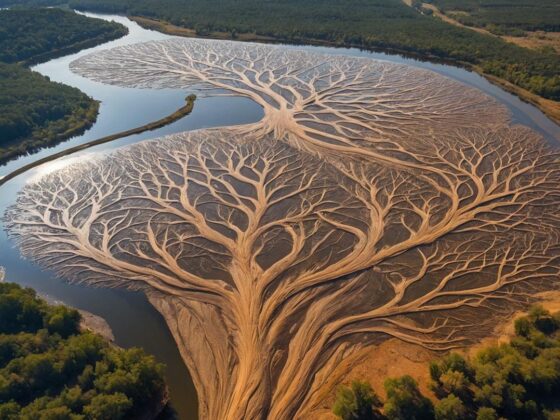The Villa Romana del Casale, located near Piazza Armerina in central Sicily, is renowned for its exceptional collection of Roman mosaics. Among these, the Mosaic of the Great Hunt stands out as one of the most impressive and well-preserved examples of Roman mosaic art. Dating back to the early 4th century AD, the villa was likely the country retreat of a powerful Roman official, possibly Marcus Aurelius Maximianus, co-emperor during the reign of Diocletian. The villa’s mosaics cover an area of approximately 3,535 square meters, with the Great Hunt mosaic being one of the largest and most complex.
The Great Hunt mosaic is located in the Ambulacro della Grande Caccia, a long corridor measuring about 60 meters in length. The mosaic depicts various hunting scenes and exotic animals from different parts of the Roman Empire and beyond. It provides a vivid representation of the Roman fascination with wild beasts and the spectacles of the arena. Key features of the Great Hunt mosaic include diverse animal representations, showcasing a wide array of animals such as lions, tigers, elephants, ostriches, and even mythical creatures.

Various hunting techniques and capture methods are illustrated in the mosaic, reflecting the Roman approach to acquiring exotic animals for arena spectacles. The artwork represents fauna from different regions of the empire, including North Africa, India, and the Middle East. The intricate details and use of vibrant colors demonstrate the high level of skill possessed by the mosaic artists of the time. The mosaic tells a story, progressing from the capture of animals to their transportation and eventual arrival at their destination, likely Rome.
The Great Hunt mosaic, along with other mosaics in the Villa Romana del Casale, was preserved for centuries under layers of mud following a landslide in the 12th century. Serious excavation work only began in the 1950s, led by Gino Vinicio Gentili, revealing the extraordinary state of preservation of these ancient artworks. The Villa Romana del Casale and its mosaics were designated as a UNESCO World Heritage Site in 1997, recognizing their exceptional artistic and historical value.
Today, visitors can view the Great Hunt mosaic and other spectacular mosaics at the Villa Romana del Casale via elevated walkways. This design allows for a comprehensive view of these ancient masterpieces while ensuring their preservation for future generations.










